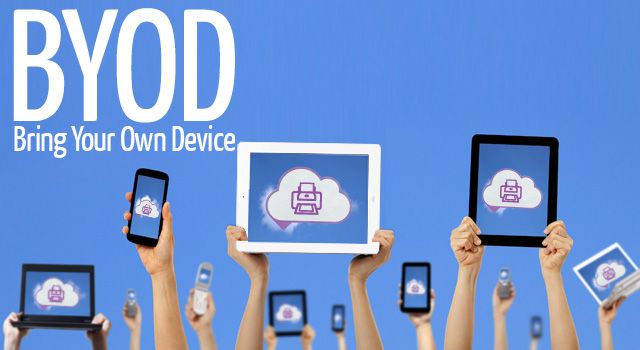Bring Your Own Device (BYOD): #7 BYOD Training
When the company works out the policies and procedures to the BYOD initiative, the next step is to start the company-wide training. The training needs to communicate the way the company will handle the BYOD transition. There are two types of employees that will be partıcularly harder to manage: the senior management who thinks the rules don’t apply to them and the youngsters who think the rules are there just to be bypassed. The company has to communicate clearly that the breach of the policies will be “treated appropriately” during the training sessions.
The first element in the training session should be the BYOD initiative: how it started, how it happened and why it is important for the company. Then the company’s acknowledgement of the initiative and its way of managing it should be clearly communicated. This introduction to the training will help the employees understand the company’s decisions better.
The next thing is to discuss the BYOD initiative in terms of supported devices, supported mobile operating systems, supported access to the company’s network and supported applications on the employee devices. It is important to tell the employees why and how such supported platforms are decided; for example the newer version of the productivity application is not yet supported because it has incompatibilities with a certain plugin used throughout the company.
Since BYOD is about employees’ own devices, training sessions are where the company has the chance to communicate with the employees about the policies.
Reimbursements are better covered in the training sessions. Almost all employees will be questioning how the company-related expenses (call minutes, data use, SMSs) will be handled. It is better to talk about all the reimbursements in detail, including how the employees will apply for them (experience: a hands-on exercise on reimbursement application will calm everyone down and keep their focus on the training).
RELATED: Outsourcing Backup? Top 5 Challenges You Need to Address
Corporate access, security, data ownership, and employee responsibility has to be covered in the training (experience: since the whole issue will be boring to the most of the employees, it is better to talk about the main points shortly and have a Q&A session in the remaining time). The corporate access and security part should cover how the employees access the corporate network from the corporate Wi-Fi and from the public/hotel Wi-Fi, device password and loss/theft of the device. (I also recommend to include the Virtual Private Network (VPN), access to Customer Relationship Management (CRM) and automation tools (if any, such as SalesForce) in the session. Users may already be familiar with these systems but putting them into training is what’s important.) The data ownership should cover the corporate/personal e-mail, social networks, corporate/personal contacts and the company data on the employee-owned device. The employee responsibility is the part where the technical details, such as logging in to the corporate network, receiving software, applications and updates, the responsibilities to comply with the policies and the results of breaching the policies should be clearly defined.
RELATED: To Err is Human: Cloud Computing
The employees should be aware of the Enterprise Mobility Management (EMM) application that the company uses. The main misconception with the EMM application is about having someone else – the corporate IT in this case – managing a personal device. During the training session, talking about the EMM application, why it is there, what it does, how it manages the devices and how will the BYOD user will benefit from the application will be wholesome to both the company and the employee in clearing out the misconceptions.
Finally, the training session should include how the corporate support will be provided to the BYOD users. The points that should be emphasized should be the level of support for everyday use for each device, the escalation paths and the support cases with lost/stolen devices. If a self-service portal is already available on the corporate Intranet, it is better to inform and point the users to the portal during the training.
RELATED: Bring Your Own Device (BYOD): #2 The Swift Revolution
As many things in the life, BYOD is not a destination, rather it is a gateway to many possibilities. Once the companies take solid steps to BYOD implementation, most probable next step will be the mobilization of the corporate data. By this, I do not mean mobile access to corporate resources, as I have covered through the BYOD series. Rather, I mean shaping the enterprises for the mobility – from in-house developed applications to the Big Data infrastructure. From today, it is important to have a solid understanding of the mobile future and plan for it.
References
- Featured image: http://redboardbiz.rogers.com
- Inline image: http://www.theprojectbox.us




